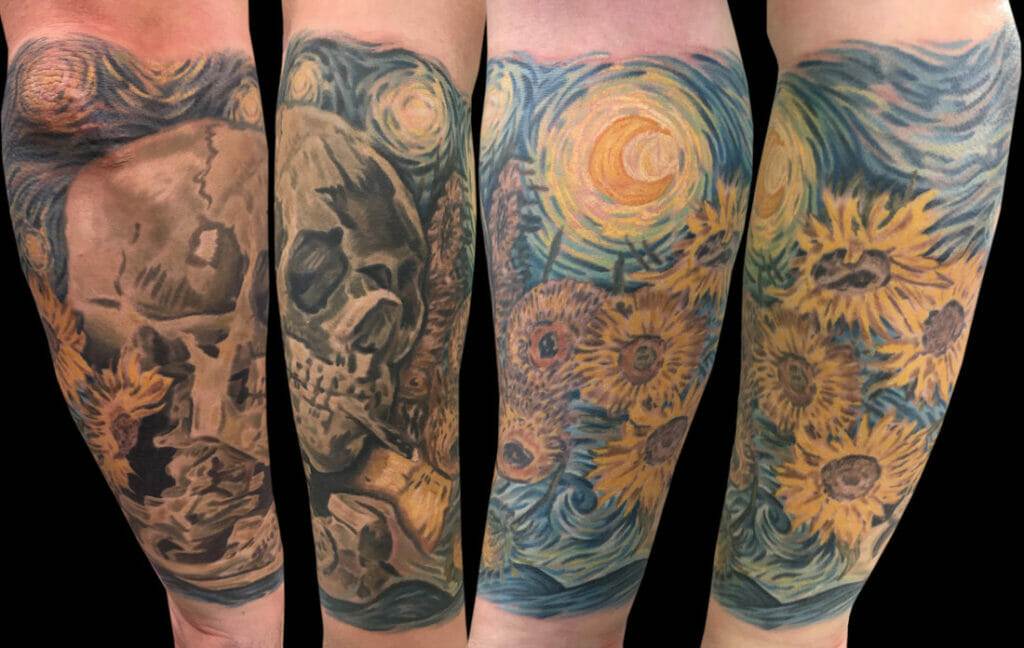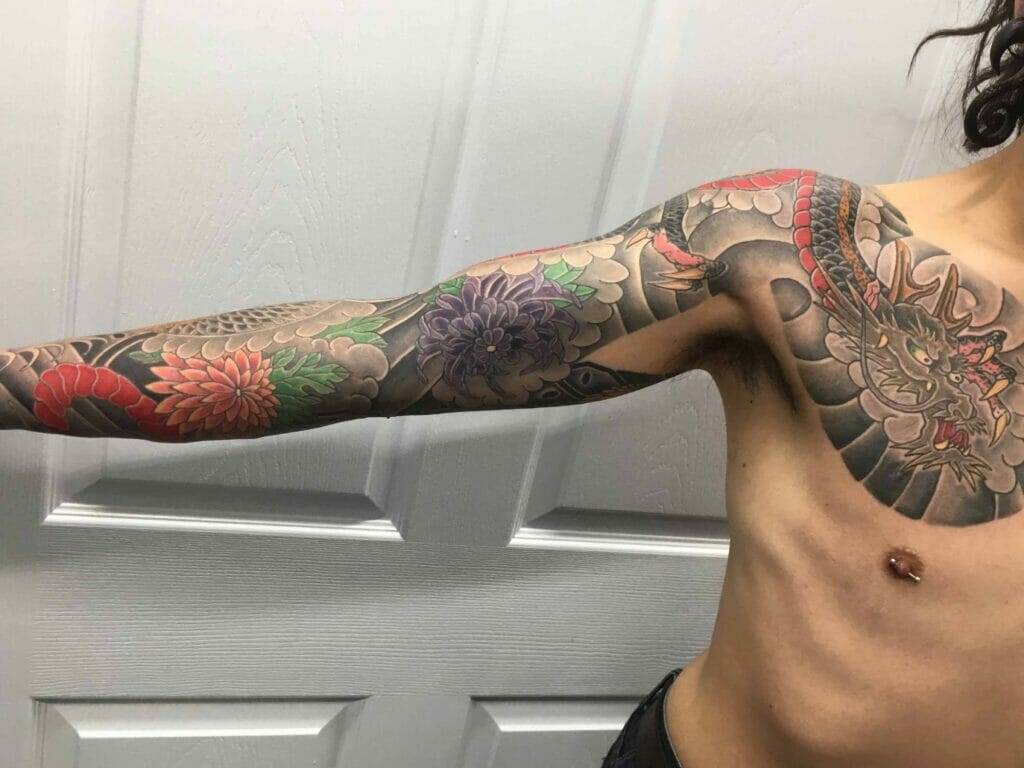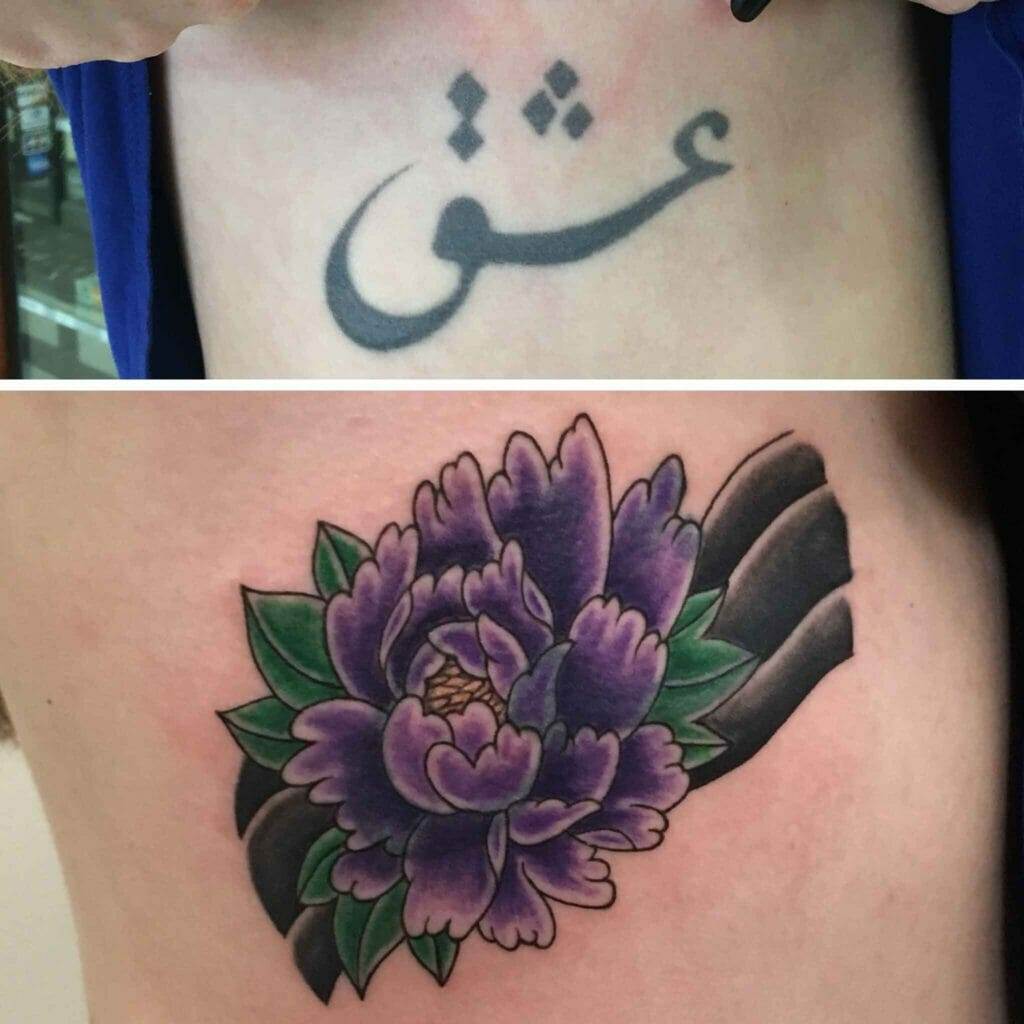Tattoos have become increasingly popular in recent years, with more and more people choosing to adorn their bodies with meaningful and artistic designs. What was once considered taboo or rebellious is now widely accepted in society, and tattoos have become a form of self-expression and personal style. However, as trends change and personal tastes evolve, many individuals find themselves wanting to cover up their existing tattoos. This is where the power of transforming tattoos through cover-ups comes into play.
Covering up a tattoo can be a powerful tool for self-expression and confidence. It allows individuals to take control of their bodies and make choices that align with their current desires and aspirations. Whether it’s a regrettable tattoo from the past, an outdated design that no longer resonates, or professional reasons that require a more discreet appearance, cover-ups can provide a fresh start and a renewed sense of self.
Understanding the Need for Tattoo Cover-Ups
There are several common reasons why people may want to cover up their tattoos. One of the most common reasons is regret. People may have gotten a tattoo in their youth without fully considering the long-term implications, only to realize later that it no longer represents who they are or what they believe in. In these cases, a cover-up can be a positive and empowering choice, allowing individuals to move forward without the constant reminder of a decision they now regret.
Another reason for tattoo cover-ups is outdated designs. As trends change and personal tastes evolve, what was once considered cool or trendy may now feel dated or out of touch. In these cases, individuals may choose to cover up their tattoos with something more current and reflective of their current style and personality.
Professional reasons can also play a role in the decision to cover up a tattoo. While tattoos are becoming more accepted in the workplace, there are still certain industries or job roles where visible tattoos may be frowned upon or even prohibited. In these cases, individuals may choose to cover up their tattoos to maintain a professional appearance and avoid potential discrimination or judgment.
The Importance of Communication in cover-up tattoos
Clear communication between the client and artist is crucial for achieving the desired result in a cover-up tattoo. It’s important for clients to be open and honest about their expectations, concerns, and any specific ideas they may have. The artist, on the other hand, should be able to provide honest feedback and suggestions based on their expertise.
During the initial consultation, it’s important for both parties to discuss the goals of the cover-up, any limitations or challenges that may arise due to the existing tattoo, and any specific design ideas or preferences. This open dialogue will ensure that both the client and artist are on the same page and working towards a common goal.
Choosing the Right Design and Placement
Selecting the right design for a cover-up tattoo is crucial for achieving a successful result. The design should effectively cover up the existing tattoo while still being aesthetically pleasing and meaningful to the individual. It’s important to work closely with the tattoo artist to come up with a design that meets these criteria.
When choosing a design, it’s important to consider the size, shape, and color of the existing tattoo. Designs with bold lines and dark shading tend to work best for cover-ups, as they can effectively hide the underlying tattoo. It’s also important to consider the placement of the new tattoo and how it will interact with the existing tattoo. The artist can provide guidance on the best placement options based on their experience and expertise.
Covering Up Tattoos with Dark Ink
Using dark ink is a common technique for covering up tattoos, especially those with heavy black lines or shading. Dark ink can effectively camouflage the existing tattoo and create a new design that seamlessly incorporates it. Skilled tattoo artists can use various techniques such as shading, stippling, and blending to ensure a smooth transition between the old and new tattoos.
There are many successful examples of cover-ups using dark ink. For example, a small black tribal tattoo can be transformed into a larger, more intricate design that incorporates elements of nature or animals. Similarly, a poorly executed portrait tattoo can be covered up with a dark, abstract design that creates a completely new and unique piece of art.

Using Color to Transform Tattoos
While dark ink is often used for cover-up tattoos, incorporating color into the design can create a more vibrant and unique result. Colorful cover-ups can be particularly effective for tattoos that have faded over time or have lighter colors that are easier to cover up.
When using color in a cover-up tattoo, it’s important to select colors that will complement the existing tattoo and skin tone. The artist can provide guidance on color choices based on their knowledge of color theory and experience with cover-up work. It’s also important to consider how the colors will age over time and ensure that they will still look vibrant and cohesive in the future.
The Role of Tattoo Removal in Cover-Ups
In some cases, tattoo removal may be necessary in conjunction with cover-up work to achieve the best result. Tattoo removal can help lighten or fade the existing tattoo, making it easier for the artist to effectively cover it up. However, it’s important to consult with a professional before undergoing tattoo removal, as it may not be suitable for everyone and can have potential risks and side effects.
Tattoo removal techniques such as laser removal or dermabrasion can help fade the existing tattoo over multiple sessions. The number of sessions required will depend on factors such as the size, color, and age of the tattoo. It’s important to follow the advice of a professional and allow enough time for the skin to heal between sessions.
Caring for Your New Tattoo
Proper aftercare is essential to ensure that your new tattoo heals properly and looks its best. The artist will provide specific instructions on how to care for your new tattoo, but there are some general tips that apply to most tattoos.
First and foremost, it’s important to keep the tattoo clean and moisturized. Gently wash the tattoo with mild soap and warm water, then pat it dry with a clean towel. Apply a thin layer of fragrance-free moisturizer or tattoo aftercare ointment to keep the skin hydrated and prevent scabbing.
It’s also important to avoid exposing the tattoo to direct sunlight or soaking it in water for extended periods of time. UV rays can fade the colors of the tattoo, while soaking can soften the scabs and increase the risk of infection. It’s best to avoid swimming pools, hot tubs, and saunas until the tattoo is fully healed.
The Emotional Impact of Transforming Tattoos
Transforming tattoos through cover-ups can have a profound emotional impact on individuals. For many, covering up a tattoo that they no longer resonate with or regret can provide a sense of closure and a fresh start. It can be a way to reclaim their bodies and make choices that align with their current values and aspirations.
Covering up a tattoo can also boost confidence and self-esteem. For individuals who may have felt self-conscious or judged because of their tattoos, a successful cover-up can provide a renewed sense of pride and acceptance. It can be a way to embrace their bodies and showcase their personal style without fear of judgment or discrimination.

Embracing Your New Tattoo with Confidence
In conclusion, transforming tattoos through cover-ups can be a powerful tool for self-expression and confidence. Whether it’s a regrettable tattoo from the past, an outdated design, or professional reasons, cover-ups allow individuals to take control of their bodies and make choices that align with their current desires and aspirations.
Finding the right tattoo artist for the job is crucial, as cover-ups require a different set of skills and techniques compared to regular tattoos. Clear communication between the client and artist is also important to ensure that both parties are on the same page and working towards a common goal.
Choosing the right design and placement is key to achieving a successful cover-up tattoo. Dark ink is often used to effectively cover up tattoos, but incorporating color can create a more vibrant and unique result. Tattoo removal may also be necessary in some cases to fade the existing tattoo before covering it up.
Proper aftercare is essential to ensure that the new tattoo heals properly and looks its best. Following the artist’s instructions and taking care of the tattoo will help maintain its appearance and longevity.
Ultimately, transforming tattoos through cover-ups can have a positive emotional impact on individuals, boosting confidence and self-esteem. It allows individuals to embrace their bodies with pride and showcase their personal style without fear of judgment or discrimination.



